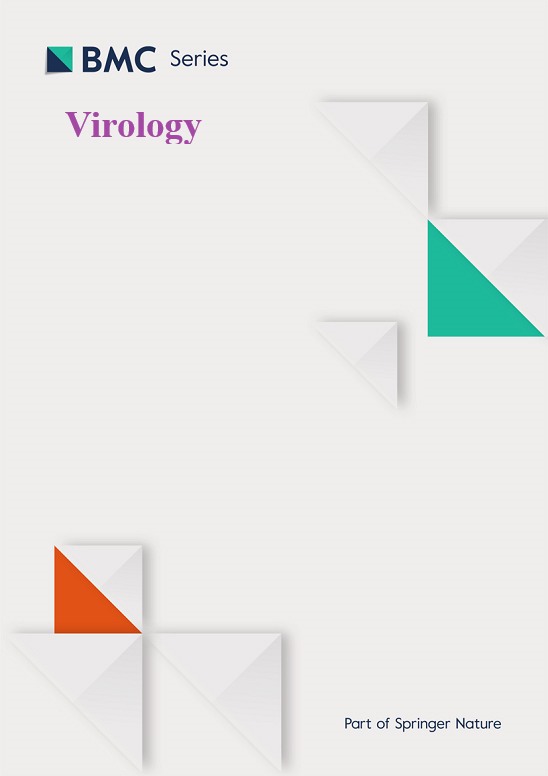单纯疱疹病毒-1靶向2'-3'cGAMP入口蛋白SLC19A1作为抗病毒对策。
IF 2.8
3区 医学
Q3 VIROLOGY
引用次数: 0
摘要
细胞外添加STING激动剂2-3cGAMP,诱导抗病毒状态,通过叶酸反转运蛋白SLC19A1转运环状二核苷酸,以细胞类型依赖的方式抑制HSV-1复制。单纯疱疹病毒-1 (HSV-1)是一种在人群中普遍存在的高血清阳性病毒,要建立成功的感染,必须破坏宿主的多种先天和内在免疫防御机制,包括干扰素刺激因子基因(STING)途径的关键参与者。在此,我们报道了HSV-1感染导致SLC19A1转录、翻译减少,重要的是,SLC19A1从感染细胞的细胞表面快速移除。我们的数据表明,SLC19A1作为新发现的细胞外2'-3'cGAMP的抗病毒介质,被HSV-1蛋白ICP27破坏。这项工作提出了关于HSV-1如何操纵宿主免疫环境进行病毒复制的新颖而重要的发现,并发现了一种重要的抗病毒机制的细节。本文章由计算机程序翻译,如有差异,请以英文原文为准。
Herpes simplex virus-1 targets the 2′-3'cGAMP importer SLC19A1 as an antiviral countermeasure
The extracellular addition of the STING agonist, 2-3cGAMP, induces an antiviral state that inhibits HSV-1 replication in a cell type dependent manner via the transportation of the cyclic-dinucleotide through the folate antiporter SLC19A1. To establish a successful infection, herpes simplex virus-1 (HSV-1), a ubiquitous virus with high seropositivity in the human population, must undermine a multitude of host innate and intrinsic immune defense mechanisms, including key players of the STimulator of INterferon Genes (STING) pathway. Herein, we report that HSV-1 infection results in the reduction of SLC19A1 transcription, translation, and importantly, the rapid removal of SLC19A1 from the cell surface of infected cells. Our data indicate SLC19A1 functions as a newly identified antiviral mediator for extracellular 2′-3'cGAMP which is undermined by HSV-1 protein ICP27. This work presents novel and important findings about how HSV-1 manipulates the host's immune environment for viral replication and discovers details about an important antiviral mechanism.
求助全文
通过发布文献求助,成功后即可免费获取论文全文。
去求助
来源期刊

Virology
医学-病毒学
CiteScore
6.00
自引率
0.00%
发文量
157
审稿时长
50 days
期刊介绍:
Launched in 1955, Virology is a broad and inclusive journal that welcomes submissions on all aspects of virology including plant, animal, microbial and human viruses. The journal publishes basic research as well as pre-clinical and clinical studies of vaccines, anti-viral drugs and their development, anti-viral therapies, and computational studies of virus infections. Any submission that is of broad interest to the community of virologists/vaccinologists and reporting scientifically accurate and valuable research will be considered for publication, including negative findings and multidisciplinary work.Virology is open to reviews, research manuscripts, short communication, registered reports as well as follow-up manuscripts.
 求助内容:
求助内容: 应助结果提醒方式:
应助结果提醒方式:


